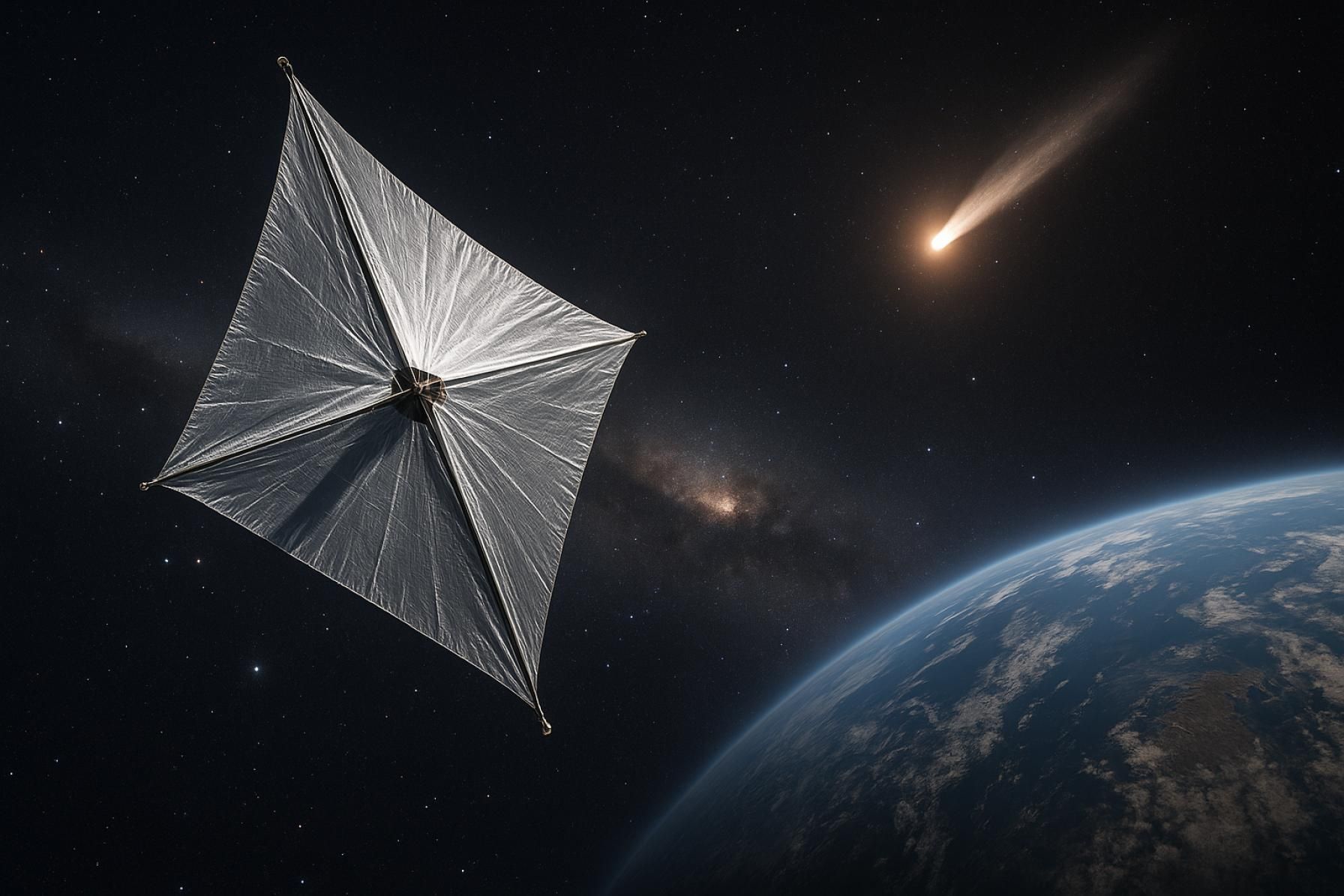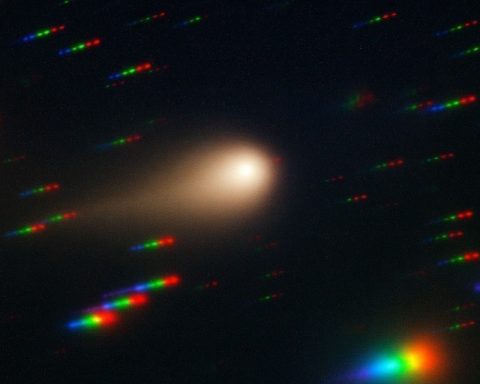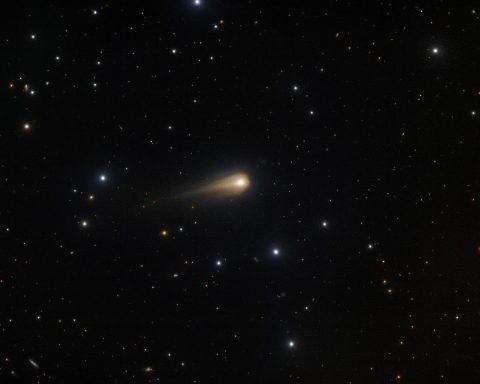- The SWIFT satellite constellation uses advanced solar sails to deliver earlier, more accurate space weather warnings.
- In December 2024, NASA’s Parker Solar Probe yielded the closest-ever images of the Sun’s corona and CMEs, vastly improving space weather predictions.
- SpaceX’s Starlink now has nearly 6,000 satellites in orbit and has regulatory approval to operate in India.
- Firefly Aerospace aims for an IPO around $2 billion, leveraging its Alpha rocket, Blue Ghost lunar lander, and Northrop Grumman partnerships.
- The Crew-11 mission will launch on July 31, sending four astronauts—two from NASA, one from JAXA, and one from Roscosmos—to the ISS aboard Crew Dragon Endeavour.
- The UK has launched a £75.6 million Active Debris Removal program to deorbit two defunct satellites by 2028, with the AVS device enabling in-orbit servicing.
- Interstellar comet 3I/ATLAS is the third known interstellar object, possibly 3–11 billion years old, moving at 134,000 mph and approaching within 1.8 AU of Earth.
- Durham University simulations suggest the Milky Way may host 80–100 faint orphan satellites, many without dark matter halos, potentially confirmed by Vera Rubin Observatory.
- ESA’s Biomass satellite uses P-band radar to map global forest biomass and polar ice, enabling climate-change mitigation and environmental policy.
- China’s Chang’e-6 has returned nearly 2 kg of lunar material from the Moon’s far side, revealing evidence of prolonged volcanic activity and episodic magnetic field regeneration up to 2.8 billion years ago.
Solar Sails and Early Space Weather Warnings: A New Era in Space Safety
Space weather—driven by solar storms and coronal mass ejections (CMEs)—poses a growing threat to our technology-dependent civilization. These solar events can disrupt satellite operations, power grids, and even endanger astronauts. In response, a new generation of solar sail-equipped satellites is poised to revolutionize our ability to forecast and mitigate these hazards.The SWIFT satellite constellation, equipped with advanced solar sails, is designed to deliver earlier and more accurate warnings of space weather threats. By harnessing solar radiation pressure, these spacecraft can maintain unique positions in space, providing unprecedented vantage points for monitoring solar activity. “Our goal is to forecast extreme space weather more accurately and earlier,” says the heliophysicist leading the project. This leap in forecasting capability could be the difference between disaster and resilience for critical infrastructure on Earth.Key Takeaways:- Solar sail satellites can position themselves optimally for solar monitoring.
- Early warnings protect satellites, power grids, and astronauts.
- The SWIFT constellation marks a paradigm shift in space weather defense.
The Parker Solar Probe: Unveiling the Sun’s Secrets
NASA’s Parker Solar Probe continues to break records, flying closer to the Sun than any previous spacecraft. Its December 2024 flyby yielded the closest-ever images of the solar corona and CMEs, offering scientists a front-row seat to the chaotic origins of the solar wind and space storms. This data is already “vastly improving our space weather predictions” and will enhance protection for astronauts and technology throughout the Solar System.The Parker Solar Probe’s findings are not just academic—they directly inform the design of future spacecraft, the operation of satellites, and the safety protocols for crewed missions venturing beyond Earth’s protective magnetic field.Bullet Recap:- Closest images of the Sun’s corona and CMEs ever captured.
- Data will improve space weather models and forecasting.
- Direct impact on astronaut safety and satellite resilience.
SpaceX: The Apex Player in the Expanding Space Economy
No company has shaped the modern space economy like SpaceX. With its Falcon 9 and Starship rockets, Starlink satellite constellation, and a growing portfolio of government and commercial contracts, SpaceX is described as the “apex player” in the sector. According to expert Chad Anderson, “the only reason that we even talk about space as an investable category is because of what SpaceX has done.”SpaceX’s dominance is not just about launch cadence or reusable rockets. Its government ties, national security role, and ability to drive down launch costs have fundamentally altered the economics of space. The company’s Starlink project is also transforming global internet access, with new launches resuming from Vandenberg Space Force Base and regulatory approval to operate in major markets like India.SpaceX Highlights:- Starlink: Nearly 6,000 satellites in orbit, aiming for global high-speed internet.
- Falcon 9: Workhorse for commercial, government, and international launches.
- Starship: Poised to enable lunar, Martian, and deep space missions.
- National security: Trusted partner for US military and allied operations.
Firefly Aerospace: IPO Ambitions Fueled by Lunar and Small Satellite Success
Firefly Aerospace is rapidly emerging as a formidable player in the commercial launch and lunar lander markets. Leveraging its Alpha rocket and Blue Ghost lunar lander, as well as partnerships with Northrop Grumman, Firefly is eyeing an IPO with a potential $2 billion valuation. Successful NASA missions and a robust pipeline of small satellite launches position Firefly as a leader in the next wave of space commercialization.Outlook:- Firefly’s dual focus on lunar and smallsat markets is unique.
- IPO could inject fresh capital into US launch sector competition.
- Success hinges on continued reliability and government partnerships.
Crew-11: NASA and SpaceX’s Next Leap in International Spaceflight
The Crew-11 mission, launching July 31, will send four astronauts—two from NASA, one from JAXA, and one from Roscosmos—to the International Space Station (ISS) aboard Crew Dragon Endeavour. This marks the capsule’s sixth flight and the longest Crew Dragon transit to date. The mission features updated parachutes, a tight launch schedule, and milestone ISS operations.Commander Zena Cardman and veteran astronaut Mike Fincke headline the team, which will conduct scientific investigations and technology demonstrations to advance future lunar missions and benefit life on Earth. The mission also underscores the reliability of Crew Dragon, which has already flown 18 crew members from eight countries.Mission Highlights:- Four international astronauts, including NASA, JAXA, and Roscosmos representatives.
- Focus on scientific research, technology demonstrations, and ISS operations.
- Upgraded safety systems and tight scheduling.
Space Debris: The Global Push for Orbital Clean-Up
With thousands of satellites in orbit and more launching every month, space debris has become a critical challenge. The UK is leading the charge with a £75.6 million initiative to develop a spacecraft for active debris removal, aiming to deorbit two defunct satellites by 2028. The UK Space Agency’s procurement and tender process is underway, with the mission expected to set a precedent for space sustainability.Meanwhile, the Canary Islands’ AVS has developed a device for remote recalibration and docking of satellites, tested on the Roads mission, which could extend satellite lifespans and support ESA’s ‘zero debris’ goal.Key Points:- UK’s £75.6M Active Debris Removal (ADR) mission targets two satellites by 2028.
- AVS device enables in-orbit servicing and debris mitigation.
- ESA and UK are setting global standards for orbital sustainability.
Interstellar Visitors: 3I/ATLAS—The Oldest Comet Ever Seen?
Astronomers have identified Comet 3I/ATLAS as the third known interstellar object to visit our Solar System, and possibly the oldest comet ever observed—potentially 3 billion years older than our Sun. Traced to the Milky Way’s thick disk, 3I/ATLAS is racing through the solar system at 134,000 mph and will approach no closer than 1.8 AU to Earth.This discovery, following in the footsteps of 1I/‘Oumuamua and 2I/Borisov, provides a rare opportunity to study primordial material from beyond our Solar System. NASA’s James Webb and Hubble telescopes are expected to probe its size and composition, deepening our understanding of cosmic origins.Quick Facts:- 3I/ATLAS: Third interstellar object, possibly 3–11 billion years old.
- Origin: Milky Way’s thick disk, a first for interstellar visitors.
- Scientific goldmine: Offers clues to the early universe and planetary formation.
The Milky Way’s Hidden Satellites: Solving the “Missing Satellites” Problem
For decades, cosmologists have puzzled over the apparent discrepancy between the number of satellite galaxies predicted by the Lambda Cold Dark Matter (ΛCDM) model and those actually observed around the Milky Way. Now, a series of advanced supercomputer simulations by Durham University cosmologists suggests our galaxy could have 80–100 more faint satellite galaxies than previously detected.These ‘orphan’ galaxies, stripped of their dark matter halos by the Milky Way’s gravity, are extremely dim and difficult to observe. Their detection would not only resolve the “missing satellites” problem but also provide robust support for the ΛCDM model, the cornerstone of modern cosmology.Simulation Insights:- Up to 100 faint, hidden satellite galaxies may orbit the Milky Way.
- Many lack dark matter halos, making them nearly invisible.
- Future telescopes like the Vera Rubin Observatory may confirm their existence.
Space-Based Internet: Bridging the Digital Divide
The dream of global, high-speed internet is rapidly becoming a reality thanks to satellite constellations like Starlink and new technologies such as 5G via satellite. Starlink, with nearly 6,000 satellites in orbit, is expanding coverage to rural and underserved regions worldwide. The service has received regulatory approval in India, with commercial rollout expected by late 2025 or early 2026.Meanwhile, initiatives in Spain and Latin America are leveraging satellite connectivity to bridge the digital divide. Lorca, Murcia, is offering free satellite internet to over 5,000 rural residents, while Aeromexico is equipping its Embraer E190 fleet with Viasat’s advanced Ka-band satellite Wi-Fi, making it the first Latin American airline to provide free ad-supported onboard connectivity.Connectivity Revolution:- Starlink and 5G via satellite promise internet access everywhere.
- Rural and remote communities are first beneficiaries.
- Airlines and governments are investing in satellite-based solutions.
Orbital Warfare and National Security: The New Space Race
The militarization of space is accelerating. The US Space Force has launched Resolute Space 2025, its largest-ever orbital warfare exercise, involving over 700 Guardians and international partners. The event tests readiness in electromagnetic warfare, space domain awareness, orbital warfare, and navigational warfare. Gen. Saltzman declared: “Space Force is prepared to fight and win in space shoulder to shoulder with our joint and allied partners.”Simultaneously, the Air Force and Space Force are conducting massive Pacific exercises, involving 12,000 personnel and 350+ aircraft, to prepare for potential conflict with China. These drills underscore the strategic importance of space-based assets and the need for robust defense and resilience.Security Developments:- US Space Force and Air Force ramp up orbital warfare and Pacific readiness exercises.
- Russia’s mysterious “killer satellites” in geosynchronous orbit raise espionage concerns.
- China demonstrates orbital refueling, extending satellite lifespans and raising dual-use worries.
Satellite Imagery: Eyes on Earth and Beyond
Satellite remote sensing is proving indispensable for disaster response, conflict monitoring, and environmental stewardship. Recent NASA and commercial satellite imagery has revealed:- Major fires at Kyiv factories after Russian strikes, highlighting the value of thermal anomaly detection in conflict zones.
- Devastation at Camp Mystic, Texas, after catastrophic floods, aiding emergency response and recovery.
- Damage to US Al Udeid Air Base in Qatar after Iranian missile strikes, providing independent verification of military events.
- Conflict monitoring and verification.
- Disaster response and recovery.
- Environmental and climate change tracking.
Climate and Earth Science: Satellites at the Forefront
Satellites are not just for space—they are essential for understanding our own planet. The ESA’s Biomass satellite uses P-band radar to penetrate forests, clouds, and ice, enabling 3D mapping of global forest biomass, detecting illegal deforestation, and monitoring polar ice melt. This data is crucial for climate change mitigation and environmental policy.However, the US faces a potential setback as NASA’s Earth science programs confront historic funding cuts, even as the European Space Agency increases its investment. The loss of key weather satellites ahead of peak hurricane season is also a concern for meteorologists, who rely on microwave imagery to improve storm predictions.Climate Science Update:- ESA’s Biomass satellite is a game-changer for forest and climate monitoring.
- NASA’s Earth science budget faces deep cuts, threatening research continuity.
- Discrepancies in satellite-based sea surface temperature datasets complicate climate models.
Lunar and Martian Frontiers: Chang’e-6 and Opportunity’s Legacy
China’s Chang’e-6 mission has returned nearly 2 kg of lunar material from the Moon’s far side, revealing evidence of prolonged volcanic activity and episodic magnetic field regeneration up to 2.8 billion years ago. The samples’ low water content suggests an asymmetric volatile distribution, deepening our understanding of the Moon’s internal evolution and ancient catastrophes.On Mars, the legacy of NASA’s Opportunity rover—which sent its final signal during a planet-wide dust storm in 2018—remains a testament to the challenges and triumphs of planetary exploration.Lunar and Martian Science:- Chang’e-6 samples reshape theories about lunar volcanism and magnetism.
- Opportunity’s mission set the standard for robotic exploration longevity.
The Buck Moon and Astronomical Wonders
The Buck Moon—the first full moon of summer 2025—captivated skywatchers worldwide. Coinciding with Earth’s aphelion (its farthest point from the Sun), this supermoon appeared especially low on the horizon, glowing orange due to atmospheric filtering. The event was further enhanced by a Major Lunar Standstill, making it a unique spectacle for stargazers and astrophotographers.Astronomical Highlights:- Buck Moon: Farthest full moon from the Sun in 2025, dramatic low-rise appearance.
- Supermoon phenomenon: Moon appears larger and more colorful.
- Global participation: Stunning images from around the world.
Satellite Communications: Security, Resilience, and Innovation
Satellite communications are at the heart of modern national security and economic resilience. The UK’s €163.3 million investment in Eutelsat secures a 17.88% stake, strengthening Europe’s satellite connectivity and technological sovereignty. Spain’s upcoming SpainSat NG2 satellite will multiply encrypted military communication capacity by 60, covering two-thirds of the globe.Meanwhile, the FCC has approved AST SpaceMobile’s massive FM1 satellite for space-based phone connectivity, despite SpaceX objections. The direct-to-cell revolution is also underway, with T-Mobile and Starlink launching a satellite messaging service for all major US carriers, and Kyivstar partnering with SpaceX to bring Starlink messaging to Ukraine and Europe.Communications Milestones:- UK and Spain invest in next-generation secure satellite networks.
- Direct-to-cell satellite messaging eliminates mobile dead zones.
- AST SpaceMobile’s FM1 satellite aims to connect the unconnected.
Space Industry and Education: Inspiring the Next Generation
From student-led CubeSat missions to billionaire-funded space camps, the next generation of space explorers is already making its mark. Croydon High School’s Astrogazers team successfully completed live flight testing of their CubeSat systems, marking a major milestone in their student-led satellite project. Meanwhile, Jared Isaacman, billionaire astronaut and Inspiration4 commander, is donating $15 million to the U.S. Space & Rocket Center’s Space Camp programs, funding cutting-edge training facilities for future astronauts.Education and Outreach:- Student CubeSat missions foster STEM participation and real-world experience.
- Major philanthropic investments are expanding access to space education.
- NASA’s podcasts and outreach continue to inspire and inform.
Outlook: The Next Frontiers
The space sector is experiencing an unprecedented convergence of technological innovation, commercial investment, scientific discovery, and geopolitical competition. From solar sails and interstellar comets to orbital warfare and global internet access, the pace of change is accelerating.What to Watch For:- The rise of active debris removal and in-orbit servicing as standard practice.
- The impact of budgetary shifts on US and European space science.
- The growing role of private sector and international partnerships in exploration and security.
- Breakthroughs in space weather forecasting and planetary defense.
- The search for hidden galaxies and interstellar visitors—reshaping our cosmic perspective.
This article is based on today’s comprehensive space news dump, with direct links to all cited sources for further reading and exploration.
Complete List of Reference Sources
References
1. theconversation.com, 2. www.skyatnightmagazine.com, 3. scitechdaily.com, 4. www.independent.co.uk, 5. finance.yahoo.com, 6. www.indiatoday.in, 7. www.azcentral.com, 8. www.vcstar.com, 9. www.ainvest.com, 10. orbitaltoday.com, 11. www.clickorlando.com, 12. dailygalaxy.com, 13. europeanspaceflight.com, 14. satellitetoday.com, 15. www.eldia.es, 16. www.forbes.com, 17. science.nasa.gov, 18. www.sciencealert.com, 19. futurism.com, 20. www.durham.ac.uk, 21. universemagazine.com, 22. nautil.us, 23. canaltech.com.br, 24. www.indiatoday.in, 25. www.aereo.jor.br, 26. dailygalaxy.com, 27. www.space.com, 28. www.newsweek.com, 29. arstechnica.com, 30. news.rambler.ua, 31. www.livescience.com, 32. www.newsweek.com, 33. noticiasambientales.com, 34. www.space.com, 35. www.nature.com, 36. science.mail.ru, 37. www.iflscience.com, 38. www.forbes.com, 39. www.bbc.co.uk, 40. www.space.com, 41. www.lightreading.com, 42. www.elperiodico.com, 43. www.pcmag.com, 44. www.cnet.com, 45. www.yourlocalguardian.co.uk, 46. www.space.com, 47. www.nasa.gov










